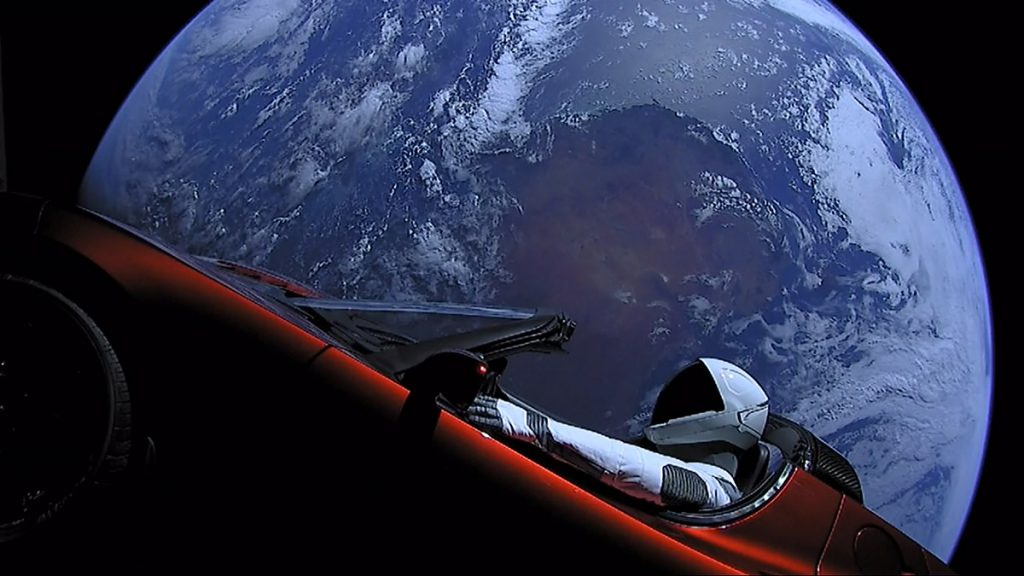
It will have been hard to miss the news last month that Elon Musk had successfully launched his Tesla car into orbit on a SpaceX Falcon Heavy rocket. As images emerged in the media of ‘Starman’ gliding through space in his red car, listening to the music of David Bowie, the significance of this technological achievement was quickly downplayed because of the comedy of the situation.
In fact, what people should have been talking about is the fact that a private space company, founded only in 2002, had potentially built a bigger and better rocket than those previously launched by NASA – the giants of the industry and the organisation that everybody names when thinking about space. NASA are themselves currently building their own ‘monster rocket’, the Space Launch System, which is expected to be the “most powerful rocket ever created”. It will be capable of launching the weight of nine buses into space, but it won’t necessarily be the best. It will be expensive, costing $10 billion to develop and $1 billion per launch, and will take much longer to build. In contrast, SpaceX’s Falcon Heavy has cost $500 million to develop, is priced at $90 million per mission and has already launched a sports car into an orbit that reaches beyond Mars. Both the SLS and Falcon Heavy are intended for human spaceflight missions to the moon, Mars and other deep-space destinations and are unlikely to directly affect you or me, unless we can afford a ticket.
What is more relevant to us is that a similar story can be found surrounding the build and launch of satellites into low-earth orbit, where new players in the market are revolutionising the industry and manufacturing space technology that is smaller, cheaper and quicker to assemble. For us, that means more space-enabled applications for our growing digital economy, as we increasingly rely on satellites to communicate, forecast ‘beasts from the east’, navigate and observe the earth’s landscape during our day-to-day business practices. SpaceX has again played a key part in this as they are driving down the cost of the launch of satellites. For example, in 2016 SpaceX launched three GPS satellites into orbit for $83 million, whereas a launch of two satellites on an Ariane 5 (the European Space Agency’s rocket) costs €170 million, and $422 million on the United Launch Alliance rocket (a joint venture between Boeing and Lockheed Martin). It is expected that the cost of launching the Falcon 9 rocket in 2020 will be as low as $65 million, which is driving other launch providers to try and offer the same. This emergence of more affordable launch options is opening up the market for small satellite manufacturers, who without lower cost launch options would face limited returns on their investment for developing cheaper satellites. They are bringing the costs down through the miniaturisation of technology and the standardisation of their processes. These small satellite manufacturers include two UK grown firms, Surrey Satellite Technology Ltd. (SSTL), and Clyde Space, which are now established global market leaders. Clyde Space has focussed their development on the manufacture of CubeSat’s, which can be as small as 10x10x10 centimetres, weighing 1 kilogram.
![By Svobodat (Own work) [CC BY-SA 3.0 (https://creativecommons.org/licenses/by-sa/3.0)], via Wikimedia Commons](https://blog.bham.ac.uk/cityredi/wp-content/uploads/sites/15/2018/03/1024px-CubeSat_in_hand-1024x768.jpg)
Similarly, the European aerospace giant Airbus and OneWeb have partnered to deliver their own satellite mega-constellation, aiming to deliver broadband links from orbit to every corner of the globe with at least 600 spacecraft. In January we also learned that the UK company Earth-I had successfully launched a pre-production prototype satellite for its upcoming satellite constellation. Earth-I are manufacturing high-resolution satellites, intended to deliver near real-time video and still images from space. This will enable organisations to monitor, track and analyse patterns or changes at any location on earth. There are serious concerns about the space junk that these constellations could lead to through collisions, but from the perspective of the digital economy, this is an exciting time with the promises of new big data sets and global connectivity.
This blog was written by Dr Chloe Billing, Research Fellow, City-REDI, University of Birmingham
Disclaimer:
The views expressed in this analysis post are those of the authors and not necessarily those of City-REDI or the University of Birmingham
To sign up for our blog mailing list, please click here.
